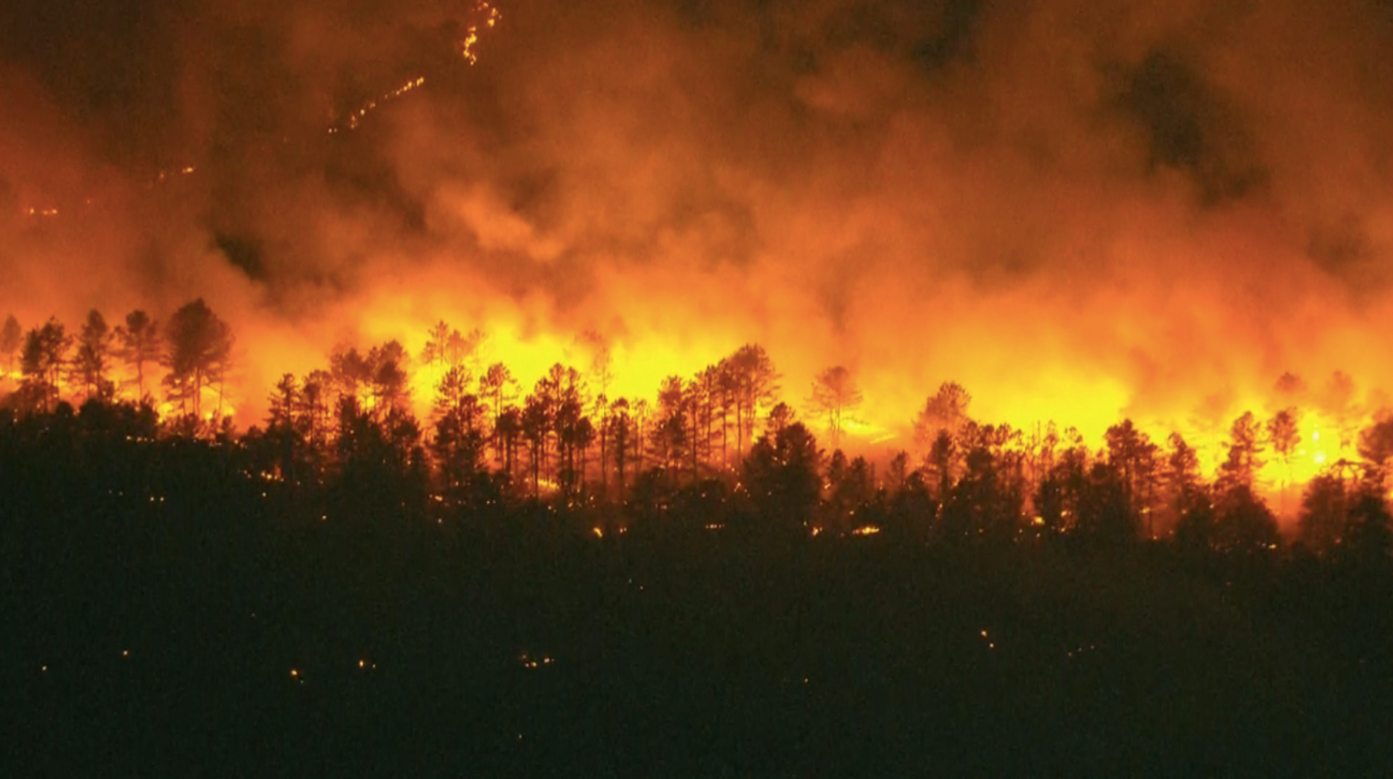Wildfire in New Jersey’s Wharton State Forest more than triples in size in less than one day
Firefighters said the wildfire was being fueled by ‘dry and breezy conditions’ in the state forest
Your support helps us to tell the story
From reproductive rights to climate change to Big Tech, The Independent is on the ground when the story is developing. Whether it's investigating the financials of Elon Musk's pro-Trump PAC or producing our latest documentary, 'The A Word', which shines a light on the American women fighting for reproductive rights, we know how important it is to parse out the facts from the messaging.
At such a critical moment in US history, we need reporters on the ground. Your donation allows us to keep sending journalists to speak to both sides of the story.
The Independent is trusted by Americans across the entire political spectrum. And unlike many other quality news outlets, we choose not to lock Americans out of our reporting and analysis with paywalls. We believe quality journalism should be available to everyone, paid for by those who can afford it.
Your support makes all the difference.A wildfire in southern New Jersey has more than tripled in size since Sunday night to at least 7,200 acres, local authorities reported.
Firefighters and local environmental agencies continued to battle the flames, which had scorched a portion of the Wharton State Forest equivalent in size to half the island of Manhattan by Monday morning, the New Jersey Forest Fire Service said, just a little over 24 hours since the flames were first reported by the agency.
The fire was burning across four of the state’s southern townships – Washington, Shamong, Hammonton and Mullica townships – and was 45 per cent contained, up from the 20 per cent contained on Sunday night.
As of their most recent update, the wildfire service reported there had been no injuries and that the agencies involved are looking to protect at least 18 structures that remain under threat.
Evacuations have taken place in the Paradise Lakes Campground, and several bike and hiking trails in the region have been shut down, including recreational paths in Batsto Village, and the Atsion Recreation Area, the Mullica River Campground, Lower Forde Campground, Mullica River Trail and boat launches along the Mullica River are all closed until further notice, ABC 6 News reported.
“Structure protection is in place and provided by local volunteer fire departments from Atlantic, Burlington and Ocean counties, we thank them for their assistance," the fire service said in one of their social media updates.
A cause for the fire has yet to be cited, but officials noted in one of the recent updates that the current blaze burning across southern New Jersey is being fueled by “dry and breezy conditions” in the state forest.

Overhead video footage captured by a local ABC 6 News showed plumes of smoke burning across the forest, which is the state’s largest single tract of land in the Wharton State Forest is the largest single tract of land within the New Jersey State Park System.
It encompasses nearly 123,000 acres within the Atlantic coastal pine barrens ecoregion, a now rare coniferous forest region in the northeast that once stretched from all the way from North Carolina to the Atlantic provinces in Canada.
Officials battling the blaze have yet to report what they suspect the cause behind the wildfire to be but noted that the dry conditions being experienced in the east coast state are making it more difficult to contain.
A recent study published in the journal Science Advances found that fire frequency has tripled in some parts of the US and that in the 2000s, wildfires, on average, grew up to four times the size of fires in previous decades. While scientists in that study attributed those changes to drought, they also noted that human-caused climate change is responsible for many areas drying out and that 84 per cent of the fires studied were started by humans.

Join our commenting forum
Join thought-provoking conversations, follow other Independent readers and see their replies
Comments